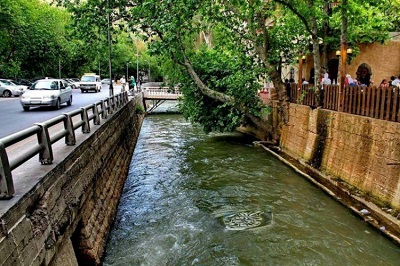Damascus is the oldest capital still inhabited in the world. It was inhabited by the Amorites and the Canaanites. The Aramites established the kingdom of Aram in Damascus. Later the kingdom was invaded by the Pharaohs, the Assyrians, the Caledonians, and the Persians, then by the Greeks, the Romans, and the Byzantines. The Arab Nabateans founded their kingdom in Damascus.
The Islamic Abbasids, Tolonians, Ikhshidis, Fatimids, Seleucids, Atabeghs, Ayyoubids and Memlouks ruled Damascus respectively. The city stood solid and united against the siege of the Franks who couldn’t conquer it,
but the Mongols defeated it and killed thousands of its inhabitants to be obliged to leave it only after a few months. Damascus was occupied by the Ottomans in 1516 and again was liberated by the great Arab Revolution in 1918.
In 1920 it fell, once more, under the French mandate which lasted until 1946 when Syria won independent.
Damascus had bred several philosophers and well known personalities who left their finger prints not only on Syria but on many parts of the world in general and in the Roman Empire in particular, like the architect Apollodor of Damascus who built the first bridge on the Danube River, the well-known Trajan Column in Rome, and many other monuments.
Damascus is rich with innumerable tourist destinations: natural, cultural and historical. These monuments document Damascus’ long history and attract the Arab as well as foreign visitors to Syria. Of these destinations:
Mount Qassyoun is situated in the northwest of Damascus, overlooking the city, Damascus. The historian Ibn Toulon said that Qassyoun was, once, covered with groves of cedar and palm trees. Twelve thousand palm trees were cut by the Mongol commander Tamerlain when he besieged Damascus in 1400 AD. At the eastern slope of the mountain there is the “ Grotto of Blood“ and the “Shrine of the Forty“ where it was said that, our mother, Eve sought retreat after her son Cain killed his brother Abel . Along the peak of the mountain there are tens of cafeterias, coffee shops and restaurants, where people can enjoy a wonderful look at Damascus. At night, the mountain is even more distinctive- a curtain of orange and white specks of light, flecked here and there with the green lights of numerous mosques, dotting the hillside like a static fireworks display.
Those who are supposed to have climbed this hill include Abraham, Jesus, and Mary, who, according to legend, looked down from the summit and proclaimed that Damascus was a “paradise on earth”. Indeed according to Arab folklore, the mountain will be spared from the chaos and havoc of the Day of Judgment, which may be worth bearing in mind if you are staying in the city at that time.
Al Rabwa,in the western entrance of Damascus, is situated in a green gorge between two mountains where River Barada winds along into Damascus. Al Rabwa lived its golden age during the Fatimids era and the Nour Eddin rule. Today, restaurants and cafes stand side by side along the gorge leaving not a span for any new construction and spreading the smell of hubble bubbles (narjilas) and barbecues through the thick groves of poplar trees standing along the Beirut road which crosses the gorge.
Haifaa Mafalani

